Capri, o Kapreion, come veniva chiamata ai tempi del mito, quando era il bordo estremo di quella che già all’epoca veniva chiamata Italia, oggi è quell’ultimo vertice di un’antica terra, in cui la radicalità della natura lascia sì che le albe e i tramonti mostrino all’uomo che guarda, la bellezza geometrica delle cose.
Ecco perché, volendo presentare il lavoro di un’artista campano come Alfredo Maiorino, non potevo che evidenziare come le stesse forme, composizioni, colori e luci di quest’artista siano partecipi della medesima essenza. Questa essenza noi la chiamiamo il “genius loci”, una proprietà legata al luogo, che incide sul modo di vedere e pensare le cose.
Infatti, le opere di Alfredo Maiorino rientrano a pieno in quella che possiamo definire la creatività mediterranea, dove la particolarità è il legame con il luogo e la volontà di ricercare i valori assoluti di bellezza espressi da uno spirito pitagorico e archimedico. La sua ricerca sembra muoversi nel tempo, attraverso il patrimonio ancestrale della forma pura. Ciò risulta chiaro e coerente con tutto il suo percorso che si muove di pari passo insieme alla storia della Galleria Trisorio, da quando nel suo primo periodo, dal 2003 al 2005 presenta prima una sua personale e poi la mostra a Castel dell’Ovo, “Il Cielo Capovolto”.
Opere astratte, ma nel senso della meditazione. Nell’antichità il Cristianesimo, soprattutto bizantino (che fluisce nella cultura napoletana) le definiva immagini consustanziali, ovvero forme ripetute che avevano la forza di astrarre la mente dalla realtà per avvicinarla allo spirito. Nelle opere di questo periodo è la ciotola che risuona ridondante come soggetto. Pensavo proprio alla ciotola, che ha origine antichissima, provenendo dal gesto che sovrappone i palmi per ricevere qualcosa: il recipio appunto, un recipiente capace di dare forma ai liquidi, che normalmente scorrono. Il panta rei, lo chiamava Eraclito, per cui ogni idea sul mondo è come un prelievo di qualcosa dal tutto. Ciò che l’artista lascia emergere è un sistema simbolico di forme semplici, presenti nell’immaginario primordiale, che ci riconnettono anche più indietro, agli stili della pittura di Roma, tramandataci dall’antica Pompei, non troppo lontana dalla Nocera Inferiore che è il luogo originario dell’artista.
Proseguendo nei suoi lavori, la composizione si libera vieppiù della forma, per lasciar emergere il fondo come tutto. Così che il tempo trovi la propria spazialità. Il tempo dell’artista, che resta come traccia nella sovrapposizione di strati su strati dove man mano il pigmento viene fuori nella sua essenza. Il tempo dell’opera che colma la solitudine tra l’uno e il nulla, in una serie di lavori che presentano su grandi campiture oggetti unici, tirati a matita come impressioni più che volumi. Così è per un’apertura nera in campo grigio, “Vuoto Segnato” che dà il titolo ad una mostra del 2009, e apre un nuovo periodo di sperimentazione. Qui il tempo è riflesso in ciò che non scorre e non muta, il vuoto appunto, inteso come sospensione, come ciò in cui tutto deve ancora accadere.
E se potessimo andare a ritroso dietro ogni velo di pittura, sull’ultimo strato dove il colore fatica ad attaccarsi al lino, e scoprissimo che in fondo l’artista non voglia dirci nulla se non lasciarci con noi stessi?
Ma come vedere noi stessi nell’epoca della rappresentazione del sé a tutti i costi? Il Narciso del Duemila non cercherebbe mai l’alterità nella propria immagine riflessa, né mai avrebbe tempo per innamorarsene, il suo rapporto con l’immagine avverrebbe solo nella consumazione, nella voracità e nello zapping. Per questo Maiorino reagisce per sottrazione, deve necessariamente rispondere al rumore della comunicazione con il silenzio della quiete.
Successivamente arriva l’elaborazione di una nuova architettura dell’opera. Se la materia è il suo nuovo interesse, l’artista sente la necessità di passare ad essa, manipolarla, comporla, al fine di lasciarla venire fuori nella sua essenza. Proprio nel 2015, presenta un nuovo ciclo di lavori dal titolo “Ri-Velare”, dove la geometria si fa promotrice di un nuovo ordine classico, in cui la convessità o l’acutezza degli angoli diventano occasione per misurare l’essenza delle cose, non intesa più come sostantivo, ma come nuovo soggetto: la porosità, la legnosità, la ruvidezza, la ferrosità.
Il suo percorso di ricerca negli ultimissimi anni sembra, come una parabola centripeta, tornare al punto di partenza, ma con una nuova consapevolezza. Lo spazio vuoto diventa una superficie fumigata che sembra sospendere la logica della rappresentazione, giacché gli oggetti seppur evidenti nella loro volumetria riconquistata, sembrano privi di tattilità. Eccoci giunti a “Giallo Camera”, la recente mostra inaugurata presso la Galleria Trisorio, a febbraio del 2020. Grandi superfici che dietro i loro vetri opachi, sembrano conservare come statua in una nicchia, forme-spirito legate alla memoria collettiva dell’uomo. Ogni opera è un camuffamento, il soggetto a cui sembra rimandare è infine solo un’idea, cioè una forma pura. Più che la presenza di qualcosa è sempre e solo assenza. L’immagine sembra apparire o dissolversi irrimediabilmen-
te, o forse appare e scompare simultaneamente. Ciò da movimento mentale, ma allo stesso tempo tutto è fermo. Questo continuo tentativo di messa a fuoco, questo movimento percettivo e mentale silenzioso, crea una continua sospensione, un’attesa. In questo movimento di allontanamento e avvicinamento come un obiettivo fotografico, si cerca il momento esatto della definizione dell’immagine che non ci sarà.
In un momento della super-immissione massiccia di concetti-immagine, l’arte di Maiorino è come un’oasi in mezzo al frastuono. La sua ricerca mira a colmare quel famoso “Horror Pleni”, diagnosticato come ultima malattia da quel medico dell’estetica che era Gillo Dorfles, il quale ammoniva la necessità di un pausare, eletto a strumento di ribellione dell’uomo del Duemila. Ma una ribellione silente, che coltiva il punto e la linea per riequilibrare i sensi, recuperando l’idea italiana e solare dell’essere, conduttrice di un ordine classico.
Capri, or Kapreion, as it was called during the age of the Myth, when it was the outer edge of what was already called Italy, today is the last summit of an ancient land, where the radicality of nature allows the dawns and sunsets to show the geometric beauty of things to the admiring man.
That is why, if we want to introduce the work of a Campanian artist such as Alfredo Maiorino, I could not but highlight how the shapes, compositions, colors and lights of this artist partake in the same essence. We call this essence the “genius loci”, a property tied to the place, affecting the way one thinks and looks at things.
As a matter of fact, the works of Alfredo Maiorino are totally part of what we could define the Mediterranean creativity, whose peculiarity is the relationship with the place and the will to research the absolute values of beauty conveyed by a Pythagorean and Archimedean spirit. His research seems to travel through time and through the ancestral heritage of pure shape. This turns out to be evident and coherent with his entire path, in tandem with the history of the Galleria Trisorio, ever since, during its first period from 2003 to 2005, it introduced his first personal exhibition and, later, the exhibition at Castel dell’Ovo, “Il Cielo Capovolto”.
Abstract pieces, in the sense of meditation. In ancient times Christianity, especially Byzantine Christianity (which flows into Neapolitan culture) defined them consubstantial images, that is, repeated shapes which had the power to abstract the mind from reality and place it closer to spirit. In the works of this period the bowl resonates as a recurring subject. I was just thinking about the bowl, which has very ancient origins, coming from the gesture of overlapping the palms to receive something: the recipio, indeed, a container capable of giving shapes to the flowing liquids. The panta rei, as Heraclitus called it, for which every idea on the world is a withdrawal of something from the whole. What the artist brings forth is a symbolic system of simple shapes, present in the primordial imagination, which reconnect us even further back, to the Roman pictorial styles, passed down from the ancient Pompeii, not very far from Nocera Inferiore, the birthplace of the artist.
Continuing in his works, the composition increasingly frees itself from the form, in order to make the background emerge as the whole. So that time finds its own spatiality. The time of the artist, that remains as a trace in the super exposition of layers upon layers where gradually the pigment is revealed in its essence. The time of the piece that fills the solitude between one and nothingness, in a series of works that introduce in large samplings unique objects, made by pencil, as impressions, more than volumes. That is for a black opening in a grey field, “Vuoto Segnato”, which gave the name to an exhibition of 2009, opening a new period of experimentations. Here, time is reflected in what does not flow and mutate, the void, exactly, meant as suspension, where everything still has to happen.
And what if we could go backwards behind every canvas, on the final layer where the color struggles to settle on the linen, and discover that deep down the artist does not want to tell us anything if not leaving us with ourselves?
And yet, how can we look at ourselves in the age of the representation of the self at all costs? The Narcissus of the Year 2000 would never look the alterity in his own reflected image, nor he would have the time to fall in love with it, his connection with the image would only happen in the consumption, in the voraciousness and in the zapping. For this reason, Maiorino reacts for subtraction, he must necessarily respond to the noise of communication with the silence of stillness.
Afterwards, it is the time for the elaboration of a new architecture of the piece. If matter is his new interest, the artist feels the necessity to manipulate, compose it, in order to let it come out in its essence. Precisely in 2015, he introduces a new cycle of works under the title “Ri-Velare”, where geometry is the promoter of a new classical order, where the convexity or sharpness of angles become the occasion to measure the essence of things, not meant anymore as a noun, but as a new subject: the porosity, woodiness, roughness, earthiness.
His path of research during the last few years appears to return to the starting point, like a centripetal parabola, but with a new awareness. The empty space becomes a fumigated surface, that seems to suspend the logic of representation, since the objects, albeit evident in their reconquered volume, appear to be void of tactility. Here we are at “Giallo Camera”, the recent exhibition inaugured at the Galleria Trisorio, in February 2020. Ample surfaces that, behind their opaque glasses, seem to preserve as a statue inside an alcove, shapes-spirits tied to the collective memory of Man. Every work is a camouflage, the subject it seems to reference is, in the end, simply an idea, that is, a pure shape. More than the presence of something, it’s always just the absence.
The image seems to appear and dissolve irremediably, or perhaps it appears and vanishes simultaneously. This gives mental movement, but at the same time everything is frozen. This continual attempt to focus, this perceptive, mental and silent movement creates continual suspension, a period of waiting. In this movement of distancing and nearing, as with a photographic zoom lens, there is a search for the exact instant of the definition of an image which will never appear.
In a moment of massive super-inclusion of concept-images, Maiorino’s art is like an oasis in the middle of the uproar. His research aims at filling that famous “Horror Pleni”, diagnosed as last illness by the physician of the aesthetic, Gillo Dorfles, who warned about the necessity of a pause, elevated as a tool for rebellion of the man of the new millennium. A silent rebellion, however, that cultivates the point and the line to reach the equilibrium of the senses, recovering the Italian and solar idea of the being, conductor of a classical order.


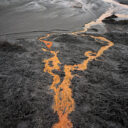
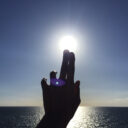

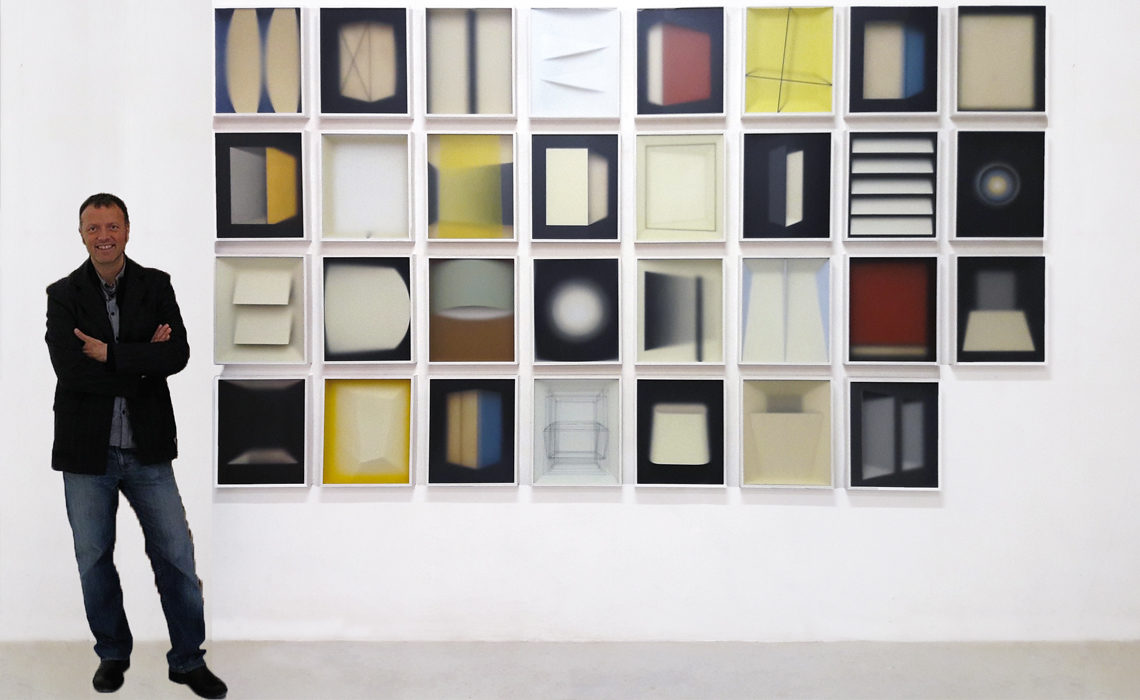
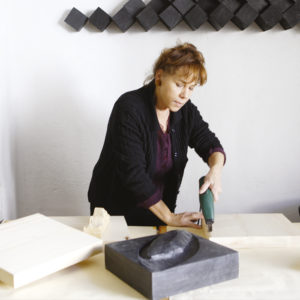
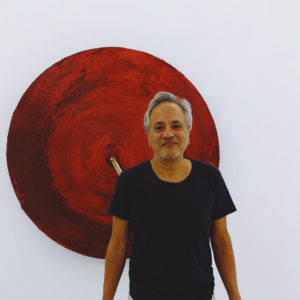
No Comments